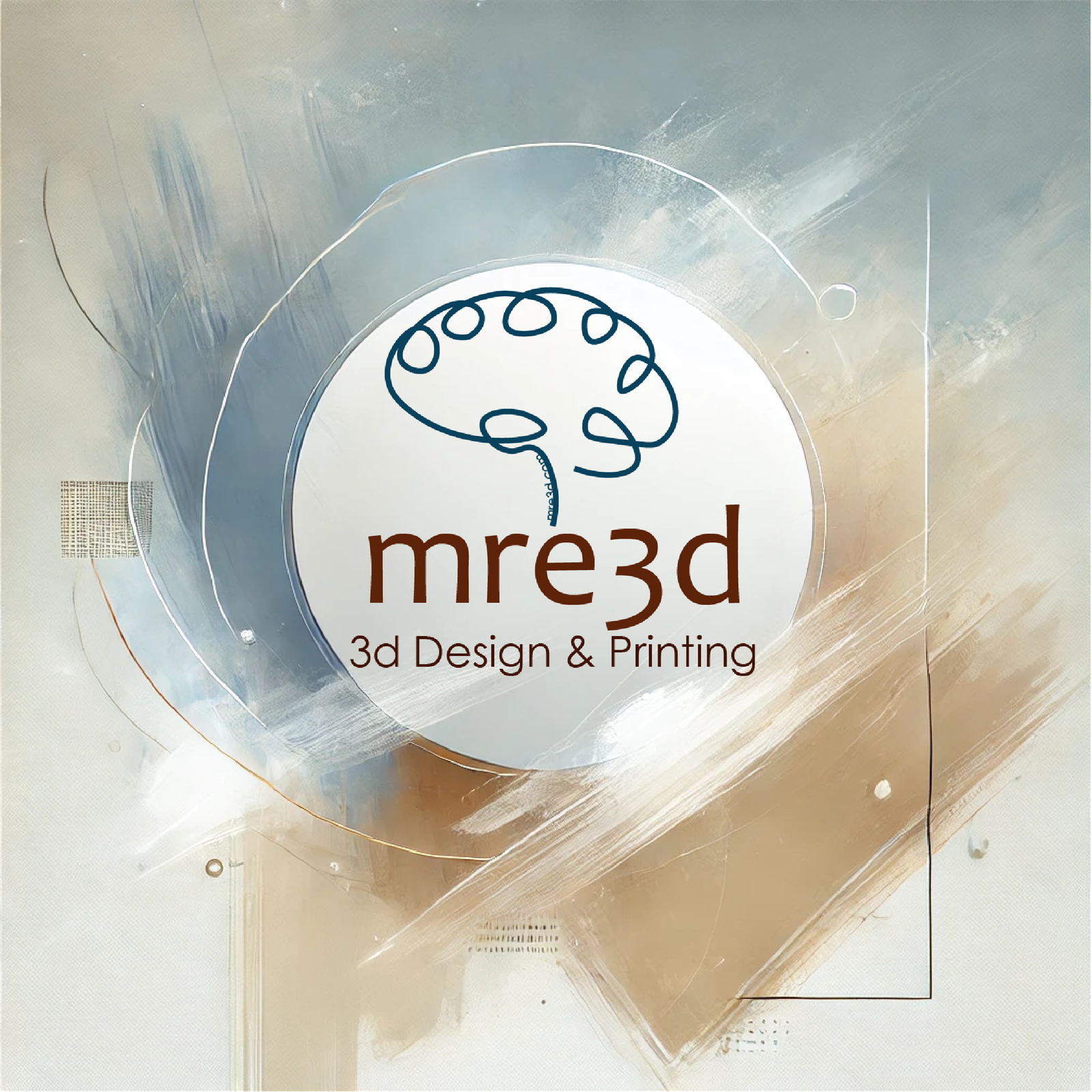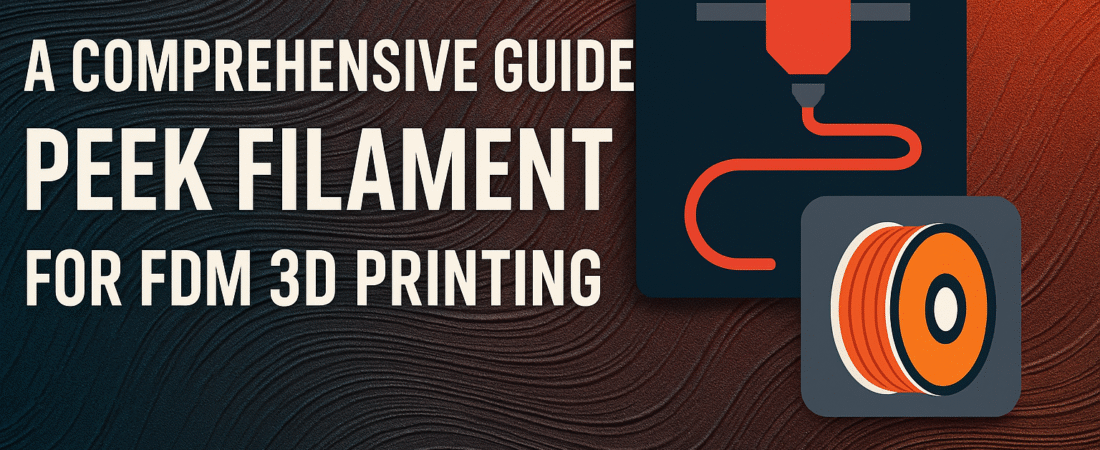Polyether Ether Ketone (PEEK) filament is a high-performance thermoplastic known for its exceptional mechanical and thermal properties. It is a premium material used in advanced applications across industries such as aerospace, automotive, medical, and electronics.
This guide explores what PEEK filament is, its physical attributes, applications, and the advantages and disadvantages of incorporating it into 3D printing projects.
What is PEEK Filament?
PEEK is a semi-crystalline thermoplastic polymer known for its outstanding strength, durability, and resistance to extreme temperatures and chemicals. It is part of the polyaryletherketone (PAEK) family and is considered one of the most advanced materials in additive manufacturing.
In FDM 3D printing, PEEK filament is prized for its ability to produce parts that are both mechanically robust and heat-resistant. However, printing with PEEK requires specialized equipment due to its demanding processing conditions. With a melting point around 343°C, PEEK typically requires extrusion temperatures between 360°C and 400°C during printing.
Physical Attributes of PEEK Filament
- High Strength and Stiffness: PEEK offers tensile strength and stiffness comparable to metals, making it suitable for load-bearing applications.
- Thermal Resistance: With a melting point of around 343°C and a continuous service temperature of up to 250°C, PEEK can withstand extreme heat.
- Chemical Resistance: PEEK is highly resistant to acids, bases, and solvents, ensuring durability in harsh environments.
- Low Flammability: PEEK has a high ignition temperature and low smoke emissions, making it ideal for safety-critical applications.
- Biocompatibility: Certain grades of PEEK are certified for medical use, including implants and other biocompatible applications. Always ensure you’re using certified medical-grade PEEK for such purposes.
- Lightweight: PEEK is lighter than metals, offering an excellent strength-to-weight ratio.
Applications of PEEK Filament
PEEK’s unique properties make it indispensable in various advanced fields:
- Aerospace and Automotive:
- Used for lightweight, high-strength components such as brackets, bushings, and seals.
- Withstands high temperatures and mechanical stresses, replacing metal parts in engines and aircraft.
- Medical Devices:
- Ideal for implants, surgical instruments, and dental applications due to its biocompatibility and sterilizability.
- Only medical-grade PEEK should be used for in-body applications.
- Electronics:
- Provides insulation and structural integrity in high-temperature electronic components.
- Industrial Applications:
- Commonly used for gears, bearings, and other parts exposed to mechanical wear and chemical exposure.
- Research and Prototyping:
- Enables the development of functional prototypes tested under demanding mechanical or thermal conditions.
Advantages of Using PEEK Filament
- Exceptional Mechanical Properties:
- Combines high strength, stiffness, and impact resistance, making it suitable for heavy-duty applications.
- Thermal Stability:
- Maintains structural integrity at high temperatures, making it ideal for high-heat environments.
- Chemical Resistance:
- Remains durable in corrosive and chemically aggressive settings.
- Lightweight Alternative to Metals:
- Offers similar strength to metals at a significantly lower weight, increasing fuel and performance efficiency.
- Biocompatibility:
- Certified versions of PEEK meet stringent medical standards, expanding its use in healthcare.
- Wear Resistance:
- Excellent for components under continuous friction and mechanical stress.
Disadvantages of Using PEEK Filament
- High Cost:
- PEEK is one of the most expensive FDM materials, which can be a barrier for hobbyist or budget-conscious users.
- Specialized Equipment Required:
- Requires a high-temperature 3D printer with:
- Extruder temperatures of 360°C to 400°C
- Heated bed between 140°C and 160°C
- Enclosed and actively heated chamber up to 90–120°C to ensure layer adhesion and reduce warping.
- Requires a high-temperature 3D printer with:
- Print Difficulty:
- Tends to warp and delaminate without proper environmental control.
- Requires fine-tuned slicer settings and stable temperature conditions.
- Moisture Sensitivity:
- Hygroscopic nature means it must be stored properly and dried before printing.
- Limited Printer Compatibility:
- Not all FDM printers support PEEK’s demanding temperature and environmental requirements.
Printing Tips for PEEK Filament
To achieve the best results when working with PEEK, follow these expert guidelines:
- Printer Specifications:
- Use a 3D printer with a high-temp hotend (≥400°C), a heated bed at 140–160°C, and an actively heated build chamber for thermal consistency.
- Adhesion:
- Print on PEI sheets, carbon fiber build plates, or apply PEEK-specific adhesives like Vision Miner Nano Polymer.
- Kapton tape or Garolite G-10 are also common build surfaces.
- Dry the Filament:
- Dry PEEK at 120°C for 4–6 hours in a filament dryer or convection oven to eliminate moisture.
- Printing Speed:
- Print at slower speeds (20–40 mm/s) to improve layer bonding and minimize warping.
- Post-Processing:
- Anneal at 200–250°C for 1–3 hours to relieve internal stresses and improve crystallinity, resulting in stronger, more thermally stable parts.
- Storage:
- Store in an airtight container with desiccant packs or use vacuum-sealed filament bags to prevent moisture absorption.
Conclusion
PEEK filament is a high-performance material that offers unparalleled strength, thermal resistance, and chemical durability. Its exceptional properties make it a preferred choice for demanding applications in aerospace, medical, and industrial sectors. However, its high cost, limited printer compatibility, and demanding handling requirements make it best suited for professionals with the right equipment.
For those equipped to meet its challenges, PEEK opens the door to creating functional parts that rival or replace metal components—especially where heat, stress, and chemical resistance are critical. Whether you’re an engineer, researcher, or advanced 3D printing specialist, PEEK filament is a powerful asset to elevate your additive manufacturing projects.

